The global photovoltaic (PV) materials marketis expected to grow from USD 17.61 billion in 2019 to USD 33.20 billion by 2027, at a CAGR of 8.25% during the forecast period 2020-2027.
Photovoltaic devices are manufactured by the materials such as organometallics, metal chalcogenides, gallium arsenide and silicon (amorphous, polycrystalline, monocrystalline). In commercial markets, mesoscopic solar cells have created an impact. Photovoltaic (PV) devices use semiconductors to generate electricity directly from sunlight via an electronic process in materials. Electrons are released through solar energy. Then it is persuaded to move in an electrical circuit that powers electrical devices or transfers electricity to the grid.PV devices can be used to power anything from home appliances to large commercial businesses.
This study delivers a comprehensive analysis of products, applications and regions.The product segment includesback sheet, encapsulant and front sheet. The back sheet segment had the highest share in the global photovoltaic (PV) materials market in 2019. Back sheets are an essential dielectric component. It is highly used in enhancing the solar cell module efficiency.The high market share of these products is because of the growing importance of dielectrics in the construction of a solar cell.The application segment includes non-residential, residential and utility. The utility segment held the highest share in the global photovoltaic (PV) materials market in 2019. Governments emphasizing on minimizing carbon emissions and the rising focus on renewable energy is responsible for increasing demand.Because of the growing number of commercial and residential solar installations, the utility segment is expected to lose market share over the forecast period.
The market has been divided into North America, Europe, Asia-Pacific, Middle East & Africa, and South America.The Asia-Pacific region held the largest share in the global photovoltaic (PV) materials market in 2019. In China and India, there is a large presence of PV module manufacturers. This results in an increased share of the market.Also, North America & Europe are expected to show the highest growth over the forecast period. The growing export of PV modules to Europe and North America is driving the usage of photovoltaic materials. Increasing local demand from the region will boost the future consumption of solar PV modules.
Some of the notable players in the global photovoltaic (PV) materials market areDu Pont, Honeywell, Mitsubishi Materials, WackerChemie, Coveme, Merck and Topray Solar.
This study forecasts revenue growth at global, regional, and country levels from 2020 to 2027. Fior Markets has segmented the market based on below-mentioned segments:
Global Photovoltaic (PV) Materials Market Analysis And Forecast, By Product
Global Photovoltaic (PV) Materials Market Analysis And Forecast, By Application
Global Photovoltaic (PV) Materials Market Analysis And Forecast, By Regional Analysis
Report Description:
1. Introduction
1.1. Objectives of the Study
1.2. Market Definition
1.3. Research Scope
1.4. Currency
1.5. Key Target Audience
2. Research Methodology and Assumptions
3. Executive Summary
4. Premium Insights
4.1. Porter’s Five Forces Analysis
4.2. Value Chain Analysis
4.3. Top Investment Pockets
4.3.1. Market Attractiveness Analysis By Product
4.3.2. Market Attractiveness Analysis By Application
4.3.3. Market Attractiveness Analysis By Region
4.4. Industry Trends
5. Market Dynamics
5.1. Market Evaluation
5.2. Drivers
5.2.1. Supportive government policies & initiatives
5.3. Restraints
5.3.1. Lack of skilled workforce for PV installation & maintenance
5.4. Opportunities
5.4.1. Technological advancements
5.5. Challenges
5.5.1. Lack of operational land
6. Global Photovoltaic (PV) Materials Market Analysis and Forecast, By Product
6.1. Segment Overview
6.2. Back Sheet
6.3. Encapsulant
6.4. Front Sheet
7. Global Photovoltaic (PV) Materials MarketAnalysis and Forecast, By Application
7.1. Segment Overview
7.2. Non-Residential
7.3. Residential
7.4. Utility
8. Global Photovoltaic (PV) Materials MarketAnalysis and Forecast, By Regional Analysis
8.1. Segment Overview
8.2. North America
8.2.1. U.S.
8.2.2. Canada
8.2.3. Mexico
8.3. Europe
8.3.1. Germany
8.3.2. France
8.3.3. U.K.
8.3.4. Italy
8.3.5. Spain
8.4. Asia-Pacific
8.4.1. Japan
8.4.2. China
8.4.3. India
8.5. South America
8.5.1. Brazil
8.6. Middle East and Africa
8.6.1. UAE
8.6.2. South Africa
9. Global Photovoltaic (PV) Materials Market-Competitive Landscape
9.1. Overview
9.2. Market Share of Key Players in Global Photovoltaic (PV) Materials Market
9.2.1. Global Company Market Share
9.2.2. North America Company Market Share
9.2.3. Europe Company Market Share
9.2.4. APAC Company Market Share
9.3. Competitive Situations and Trends
9.3.1. Application Launches and Developments
9.3.2. Partnerships, Collaborations, and Agreements
9.3.3. Mergers & Acquisitions
9.3.4. Expansions
10. Company Profiles
10.1. Du Pont
10.1.1. Business Overview
10.1.2. Company Snapshot
10.1.3. Company Market Share Analysis
10.1.4. Company Product Portfolio
10.1.5. Recent Developments
10.1.6. SWOT Analysis
10.2. Honeywell
10.2.1. Business Overview
10.2.2. Company Snapshot
10.2.3. Company Market Share Analysis
10.2.4. Company Product Portfolio
10.2.5. Recent Developments
10.2.6. SWOT Analysis
10.3. Mitsubishi Materials
10.3.1. Business Overview
10.3.2. Company Snapshot
10.3.3. Company Market Share Analysis
10.3.4. Company Product Portfolio
10.3.5. Recent Developments
10.3.6. SWOT Analysis
10.4. Wacker Chemie
10.4.1. Business Overview
10.4.2. Company Snapshot
10.4.3. Company Market Share Analysis
10.4.4. Company Product Portfolio
10.4.5. Recent Developments
10.4.6. SWOT Analysis
10.5. Coveme
10.5.1. Business Overview
10.5.2. Company Snapshot
10.5.3. Company Market Share Analysis
10.5.4. Company Product Portfolio
10.5.5. Recent Developments
10.5.6. SWOT Analysis
10.6. Merck
10.6.1. Business Overview
10.6.2. Company Snapshot
10.6.3. Company Market Share Analysis
10.6.4. Company Product Portfolio
10.6.5. Recent Developments
10.6.6. SWOT Analysis
10.7. Topray Solar
10.7.1. Business Overview
10.7.2. Company Snapshot
10.7.3. Company Market Share Analysis
10.7.4. Company Product Portfolio
10.7.5. Recent Developments
10.7.6. SWOT Analysis
List of Table
1. Global Photovoltaic (PV) Materials Market, By Product, 2017-2027 (USD Billion)
2. GlobalBack Sheet, Photovoltaic (PV) MaterialsMarket, By Region, 2017-2027 (USD Billion)
3. GlobalEncapsulant, Photovoltaic (PV) Materials Market, By Region, 2017-2027 (USD Billion)
4. GlobalFront Sheet, Photovoltaic (PV) Materials Market, By Region, 2017-2027 (USD Billion)
5. Global Photovoltaic (PV) Materials Market, ByApplication, 2017-2027 (USD Billion)
6. GlobalNon-Residential, Photovoltaic (PV) Materials Market, By Region, 2017-2027 (USD Billion)
7. Global Residential, Photovoltaic (PV) Materials Market, By Region, 2017-2027 (USD Billion)
8. Global Utility, Photovoltaic (PV) Materials Market, By Region, 2017-2027 (USD Billion)
9. North America Photovoltaic (PV) Materials Market, By Product, 2017-2027 (USD Billion)
10. North America Photovoltaic (PV) Materials Market, ByApplication, 2017-2027 (USD Billion)
11. U.S. Photovoltaic (PV) Materials Market, By Product, 2017-2027 (USD Billion)
12. U.S. Photovoltaic (PV) Materials Market, By Application, 2017-2027 (USD Billion)
13. Canada Photovoltaic (PV) Materials Market, By Product, 2017-2027 (USD Billion)
14. CanadaPhotovoltaic (PV) Materials Market, By Application, 2017-2027 (USD Billion)
15. Mexico Photovoltaic (PV) Materials Market, By Product, 2017-2027 (USD Billion)
16. Mexico Photovoltaic (PV) Materials Market, By Application, 2017-2027 (USD Billion)
17. Europe Photovoltaic (PV) Materials Market, By Product, 2017-2027 (USD Billion)
18. Europe Photovoltaic (PV) Materials Market, By Application, 2017-2027 (USD Billion)
19. Germany Photovoltaic (PV) Materials Market, By Product, 2017-2027 (USD Billion)
20. Germany Photovoltaic (PV) Materials Market, By Application, 2017-2027 (USD Billion)
21. France Photovoltaic (PV) Materials Market, By Product, 2017-2027 (USD Billion)
22. France Photovoltaic (PV) Materials Market, By Application, 2017-2027 (USD Billion)
23. U.K. Photovoltaic (PV) Materials Market, By Product, 2017-2027 (USD Billion)
24. U.K. Photovoltaic (PV) Materials Market, By Application, 2017-2027 (USD Billion)
25. Italy Photovoltaic (PV) Materials Market, By Product, 2017-2027 (USD Billion)
26. Italy Photovoltaic (PV) Materials Market, By Application, 2017-2027 (USD Billion)
27. Spain Photovoltaic (PV) Materials Market, By Product, 2017-2027 (USD Billion)
28. Spain Photovoltaic (PV) Materials Market, By Application, 2017-2027 (USD Billion)
29. Asia Pacific Photovoltaic (PV) Materials Market, By Product, 2017-2027 (USD Billion)
30. Asia Pacific Photovoltaic (PV) Materials Market, By Application, 2017-2027 (USD Billion)
31. Japan Photovoltaic (PV) Materials Market, By Product, 2017-2027 (USD Billion)
32. Japan Photovoltaic (PV) Materials Market, By Application, 2017-2027 (USD Billion)
33. China Photovoltaic (PV) Materials Market, By Product, 2017-2027 (USD Billion)
34. China Photovoltaic (PV) Materials Market, By Application, 2017-2027 (USD Billion)
35. India Photovoltaic (PV) Materials Market, By Product, 2017-2027 (USD Billion)
36. India Photovoltaic (PV) Materials Market, By Application, 2017-2027 (USD Billion)
37. South America Photovoltaic (PV) Materials Market, By Product, 2017-2027 (USD Billion)
38. South America Photovoltaic (PV) Materials Market, By Application, 2017-2027 (USD Billion)
39. Brazil Photovoltaic (PV) Materials Market, By Product, 2017-2027 (USD Billion)
40. Brazil Photovoltaic (PV) Materials Market, By Application, 2017-2027 (USD Billion)
41. Middle East and Africa Photovoltaic (PV) Materials Market, By Product, 2017-2027 (USD Billion)
42. Middle East and Africa Photovoltaic (PV) Materials Market, By Application, 2017-2027 (USD Billion)
43. UAE Photovoltaic (PV) MaterialsMarket, By Product, 2017-2027 (USD Billion)
44. UAE Photovoltaic (PV) Materials Market, By Application, 2017-2027 (USD Billion)
45. South Africa Photovoltaic (PV) Materials Market, By Product, 2017-2027 (USD Billion)
46. South Africa Photovoltaic (PV) Materials Market, By Application, 2017-2027 (USD Billion)
List of Figures
1. Global Photovoltaic (PV) Materials MarketSegmentation
2. Global Photovoltaic (PV) Materials Market: Research Methodology
3. Market Size Estimation Methodology: Bottom-Up Approach
4. Market Size Estimation Methodology: Top-Down Approach
5. Data Triangulation
6. Porter’s Five Forces Analysis
7. Value Chain Analysis
8. Global Photovoltaic (PV) Materials Market Attractiveness Analysis By Product
9. Global Photovoltaic (PV) Materials Market Attractiveness Analysis By Application
10. Global Photovoltaic (PV) Materials Market Attractiveness Analysis By Region
11. Global Photovoltaic (PV) Materials Market: Dynamics
12. Global Photovoltaic (PV) Materials Market Share by Product(2020 & 2027)
13. Global Photovoltaic (PV) Materials Market Share by Application (2020 & 2027)
14. Global Photovoltaic (PV) Materials Market Share by Regions (2020 & 2027)
15. Global Photovoltaic (PV) Materials Market Share by Company (2019)
Market research is a method of gathering, assessing and deducing data & information about a particular market. Market research is very crucial in these days. The techniques analyze about how a product/service can be offered to the market to its end-customers, observe the impact of that product/service based on the past customer experiences, and cater their needs and demands. Owing to the successful business ventures, accurate, relevant and thorough information is the base for all the organizations because market research report/study offers specific market related data & information about the industry growth prospects, perspective of the existing customers, and the overall market scenario prevailed in past, ongoing present and developing future. It allows the stakeholders and investors to determine the probability of a business before committing substantial resources to the venture. Market research helps in solving the marketing issues challenges that a business will most likely face.
Market research is valuable because of the following reasons:
Our research report features both the aspects; qualitative and quantitative. Qualitative part provides insights about the market driving forces, potential opportunities, customer’s demands and requirement which in turn help the companies to come up with new strategies in order to survive in the long run competition. The quantitative segment offers the most credible information related to the industry. Based on the data gathering, we use to derive the market size and estimate their future growth prospects on the basis of global, region and country.
Our market research process involves with the four specific stages.

Data Collection: This stage of the market research process involves with the gathering and collecting of the market/industry related data from the sources. There are basically two types of research methods:
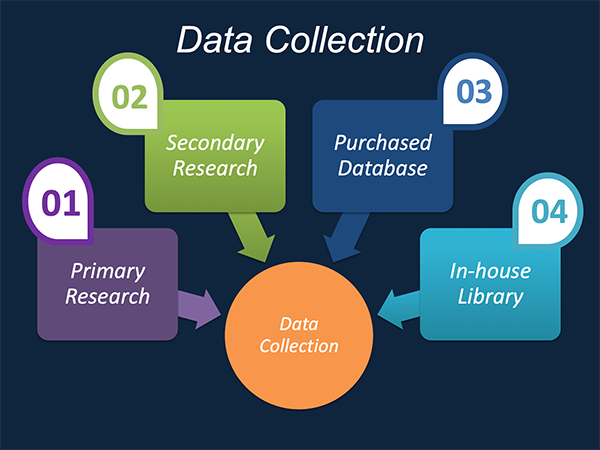
Data Synthesis: This stage includes the evaluation and assessment of all the data acquired from the primary and secondary research. It likewise includes in evaluating the information for any disparity watched while information gathering identified with the market. The data & information is gathered with consideration to the heterogeneity of sources. Scientific and statistical methods are implemented for synthesizing dissimilar information sets and provide the relevant data which is fundamental for formulating strategies. Our organization has broad involvement with information amalgamation where the information goes through different stages:


Market Formulation & Deduction: The last stage includes assigning the data & information in a suitable way in order to derive market size. Analyst reviews and domain based opinions based on holistic approach of market estimation combined with industry investigation additionally features a crucial role in this stage.
This stage includes with the finalization of the market size and numbers that we have gathered from primary and secondary research. With the data & information addition, we ensure that there is no gap in the market information. Market trend analysis is finished by our analysts by utilizing data extrapolation procedures, which give the most ideal figures to the market.
Data Validation: Validation is the most crucial step in the process. Validation & re-validation through scientifically designed technique and process that helps us finalize data-points to be used for final calculations. This stage also involves with the data triangulation process. Data triangulation generally implicates the cross validation and matching the data which has been collected from primary and secondary research methods.





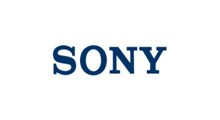

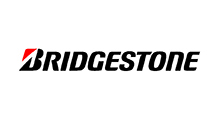

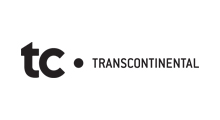















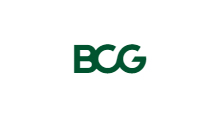


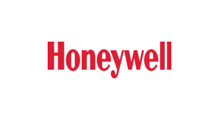

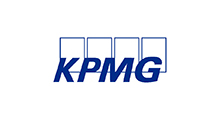




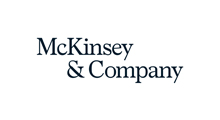

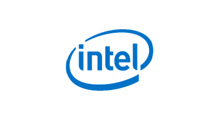







Free Customization
Countries can be added on demand
Free yearly update on purchase of Multi/Corporate User License
Companies served till date

We serve our customers 24x7 for 365 days through calls, emails and live chat options.

Huge database of exceptional market reports bringing market intelligence to your fingertips.

SSL enabled, we offer you various secured payment options for risk free purchase.